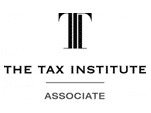In what has been a saga of losses in pursuit of gold, the latest Administrative Appeals Tribunal (AAT) case of HNMF v Commissioner of Taxation (Taxation) [2023] AATA 4067 (HNMF Case) has seen the Commissioner again face defeat, this time in respect of the anti-avoidance provisions in the GST Act.
The case, reverted to the AAT for reconsideration following a Full Federal Court decision, provides a helpful analysis of the anti-avoidance provisions which are similarly but not identically mirrored in other federal laws (such as Part IVA of ITAA 1936) and state legislation (such as the Land Tax Act 2005 (Vic)). The HMNF Case is important reading for practitioners and a keen reminder for taxpayers of the scope of anti-avoidance tax provisions.
Background to the gold bullion saga
The HMNF Case results from the Federal Court’s directions in ACN 154 520 199 Pty Ltd (in liq) v FC of T [2020] FCAFC 190 (Initial Case). In the Initial Case, the Commissioner appealed against a decision of the AAT (reported at; [2019] ATC 5981) that found in favour of the refiner EBS & Associates (then in liquidation) as the taxpayer (Taxpayer).
The Taxpayer had acquired scrap gold (claiming GST input credits for it) and converted it into precious metal – being investment grade gold bullions. The latter, when sold, constituted a GST free supply. The case ultimately was decided in favour of the Taxpayer. The result was highly publicised at the time as being a landmark case causing a significant budget hole for the Government as a result of the ATO’s ultimate loss.
The key facts of the Initial Case were:
- The Taxpayer acquired and refined scraps gold as part of a joint venture. The Taxpayer then converted the refined gold (already refined to a 99.9% fineness) into investment grade gold bullions and sold those bullions. The supply of a gold bullion is generally input taxed and as such a supplier is not entitled to input tax credits. However, where a taxpayer’s supply of precious metals is the first supply of the metal after it was refined, it is GST free.
- The Taxpayer deemed this to be the first supply and therefore sold the bullions GST-free to precious metal dealers. Additionally, the Taxpayer claimed $122,112,065 input tax credits for the acquisitions of the “impure” or less pure gold.
- On review, the Commissioner deemed that the supplies of bullion were not GST-free on the basis that the gold was not refined by the Taxpayer but merely placed into bullion forms. The supply was therefore not the first supply of that precious metal but an input-taxed supply. Notices of assessments were issued to the Taxpayer disallowing the input tax credits claimed. In addition, the Commissioner imposed significant penalties of $58,059,830 against the Taxpayer.
The AAT affirmed the Commissioner’s position. The Commissioner had raised anti-avoidance as an alternative argument. The AAT observed as obiter that there was a scheme for the purpose of the anti-avoidance provisions and that the dominant purpose of the scheme was to obtain input tax credits. The Taxpayer then appealed to the Full Federal Court.
The Full Federal Court allowed the Taxpayer’s appeal and set aside the AAT decision, stating that it was indeed the first supply of a precious metal by the Taxpayer. The matter was then remitted to a differently constituted AAT to make a redetermination in respect of the anti-avoidance provisions, leading to this HMNF Case.
The recent loss for the ATO
The HMNF Case focused on the anti-avoidance provisions of the GST legislation. The AAT was required to consider whether the Taxpayer had discharged the burden of proving that it was not reasonable to conclude that:
- an entity that entered into or carried out a scheme or part of the scheme did so with the sole or dominant purpose of the applicant getting a GST benefit; and
- the principal effect of the scheme, or of part of the scheme, was that the Taxpayer received a GST benefit from the scheme, directly or indirectly.
As part of the AAT decision, consideration was given to the factors in Div 165 of the GST Act that must be considered in determining the purpose of effect of a scheme. These factors are similar to those contained in the income tax legislation (s 177D of Pt IVA of the Income Tax Assessment Act 1936) as well as state-based legislation (such as s 101 of the Land Tax Act 2005 (Vic)). The AAT’s commentary on these factors provides an interesting perspective on each.
Some of the key takeaways from the AAT’s lengthy decision were as follows:
- A black sheep doesn’t sully the flock: Fraudulent suppliers who failed to remit GST to the ATO (i.e. on their supplies of unrefined metals to the Taxpayer) were identified in the chain of entities. Those parties were enriched by not paying the GST they were otherwise liable to pay and a dominant purpose of tax avoidance by those fraudulent suppliers could be inferred. However, there was no identifiable financial change for the Taxpayer. Therefore, the AAT found no basis to support the conclusion that the Taxpayer had a dominant purpose of obtaining a tax benefit (the input tax credits). This was a significant standpoint from the AAT, with many parties in a chain often treated as tainted by the ATO, despite any evidence of their own financial gain.
- Entitlements by law, and not by themselves indicators of purpose: The AAT noted that the claim of the input tax credits alone by the Taxpayer was an “unremarkable outcome.” Input tax credits are a fundamental feature of GST systems throughout the world. The receipt of such credits did not alone support a conclusion that any entity entered into the scheme with the dominant purpose of obtaining a tax benefit comprising those input tax credits.
- Focus on the purpose of the Act: The AAT shifted away from the traditional assessment of whether a tax benefit would result if not for Div 165:
Just because a transaction has an effect of lowering tax liability or increasing a credit does not necessarily attract an inference that the parties to the transaction entered into it or carried it out for the sole or dominant purpose of obtaining that tax consequence.
The AAT instead sought to question whether, in the absence of Div 165, the outcome was consistent with the operation intended by the GST Act? On that consideration, the AAT found that the outcome was entirely consistent with an intended outcome of the GST Act. The AAT further noted that this factor, analysed this way, suggested that the dominant purpose of Taxpayer was not to secure a GST benefit.
- Refunds are not profits: The Commissioner submitted that the Taxpayer profited for receiving the refund of the GST input tax credit, and that without that refund the transactions made no sense. The AAT rejected this, noting that the mere availability of input tax credits could not be regarded as a source of profit. The obtaining of the credits had a neutral impact on the Taxpayer since it was matched by the obligation to pay GST.
AAT decisions are not precedential, and the ATO has since appealed against this decision. It will be a highly important anti-avoidance case to keep an eye on. As noted above, some of the AAT’s points and methods of interpretation have the potential to materially shape how other anti-avoidance provisions are to be applied going forward.
Navigating your GST complexities
We are seeing an escalation in GST audits from the ATO. Businesses should review the appropriateness of circumstances where they charge and are charged GST. The consequences of getting it wrong, may be significant. Taxpayers are urged to proactively seek expert advice to navigate the complexities of tax compliance in this area. Our seasoned team of tax and structuring specialists is well-equipped to provide strategic guidance tailored to your specific situation.
If you find yourself grappling with GST-related concerns or require clarity on compliance matters, reach out to one of our specialists.
This article was first published in Issue 5 of the CCH Australian Tax Week Bulletin (8 February 2024).
Want Tax & Structuring updates delivered straight to your inbox? Click here to subscribe.










